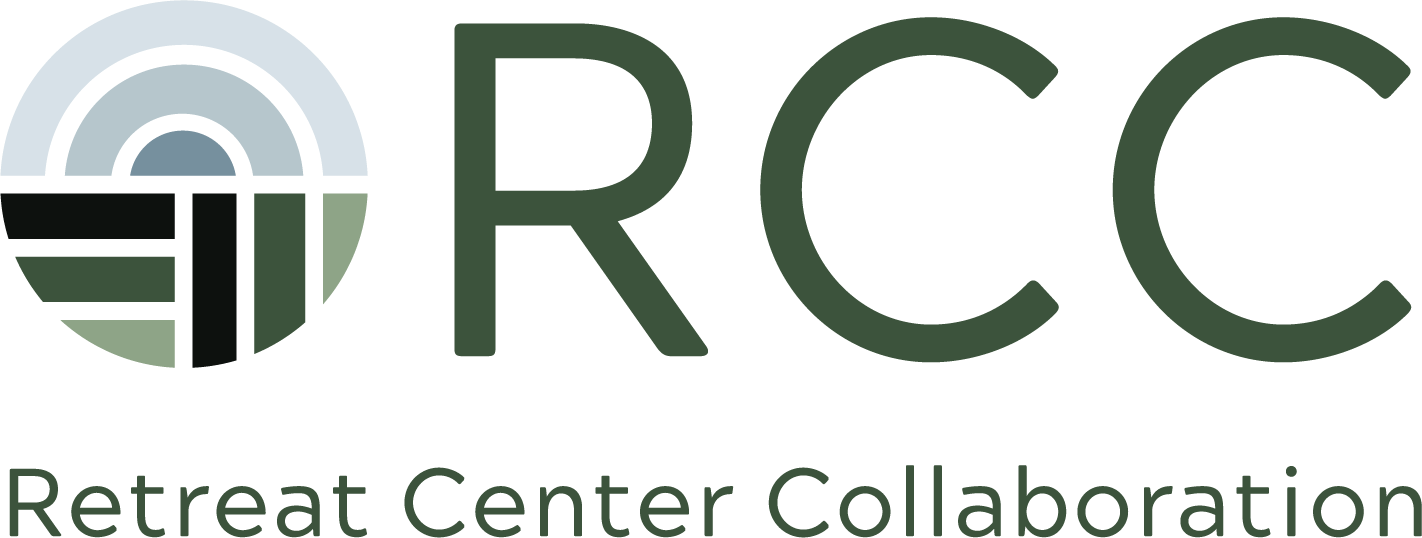Justice in Motion: the JEDI Wheel
Last week on our Community Call with Jenyng Wu, we explored the work of retreat centers through the lens of JEDI — Justice, Equity, Diversity, and Inclusion.
Let’s take a closer look at the collaborative design process and our collective takeaways coming out of the call. If you weren’t able to join us, we invite you to explore the JEDI Wheel and take note of elements you might apply at your retreat center or allied organization. Check it out!
First we asked, “Where is JEDI relevant to our retreat center, to our mission, to our work now?” Answering this question (on blue stickies above) moves us toward opportunities that already surround us in our relationships and current programming. Once we’ve identified that JEDI is relevant to our work, we often begin to see that it applies all over the place. Lots of green stickies showed up as we named the opportunities.
Knowing that we have opportunities to put JEDI into motion, and building on the relationships and support already in place, we’re ready to choose the next best action step. These actions (purple sticky notes) aren’t pulled out of thin air, unattached to people and places. Instead, they’re the natural outcome of looking at our current work through the focused lens of justice, equity, diversity, and inclusion.
These sticky notes will look different for each retreat center, as they are an outgrowth of our local community relationships, our organizational cultures, our religious, spiritual and secular traditions, and our missions, vocations, and skills.
Take a look below at the many different responses we recorded together on the call.
Relevance
Strong interest in JEDI from staff within centers
Society is changing and affects who is coming
What is going on in the world (justice)
JEDI amplifies our work and our ability to be relevant
There is interest, especially from the younger generation
JEDI work is training in adaptive management
Opportunities
Group work around grace
Identify individual and collective work as a staff
Setting up study groups (i.e. readings)
COVID creates opportunity - rethink patterns on how we reopen
Reaching out to Black communities in our own communities
Change mindset - mindset shift
Collaborative leadership
Use our retreat centers as places of refuge
Collaborative facilitation
Explore Zoom space for learning
Sharing experiences and bringing them to light
Working with board and ED on common language
Uplift BIPOC voices - bring in BIPOC leaders/people within our communities
Identify how to be proactive, to who we fund
Weave JEDI program into/with our faith tradition
Leading workshops on JEDI
Bring contemplative spaces to the burnout of activism
Action
Be okay with inaction - contemplative reflections
Ask for feedback from presenters and guests - how can we connect better
Shift power from Board to committee members (with needs-based stipends)
Bring different views/people in the conversation
Connect with a BIPOC org
Thread a statement of commitment
Examine languaging: welcome vs. invitation
Create a resource list
1% for Humanity
Identify a spring program from Pope’s message
Topic for our next meeting - Structural racism
Icon work: contextualizing the art in our retreat space
Taking an action step sets your center up to evaluate how it went — by looking at relevance again, identifying the new opportunities that may be available, and letting the wheel roll forward.
We encourage you to try this collaborative JEDI Wheel exercise with your staff, share the JEDI lens with your board, and keep in touch with your peers in the Retreat Center Collaboration along the way. Together, let’s continue to identify the best ways to set justice in motion at retreat centers.
